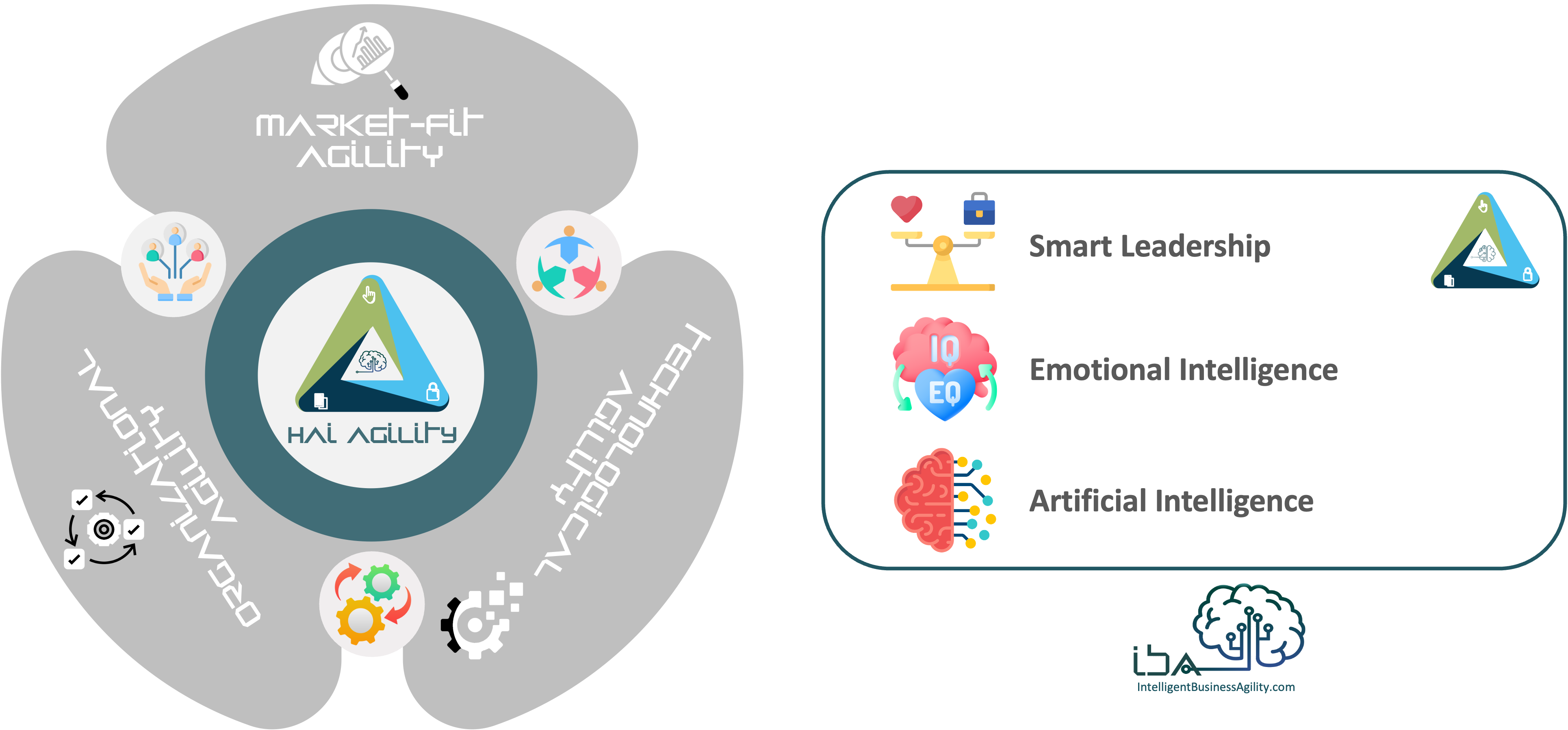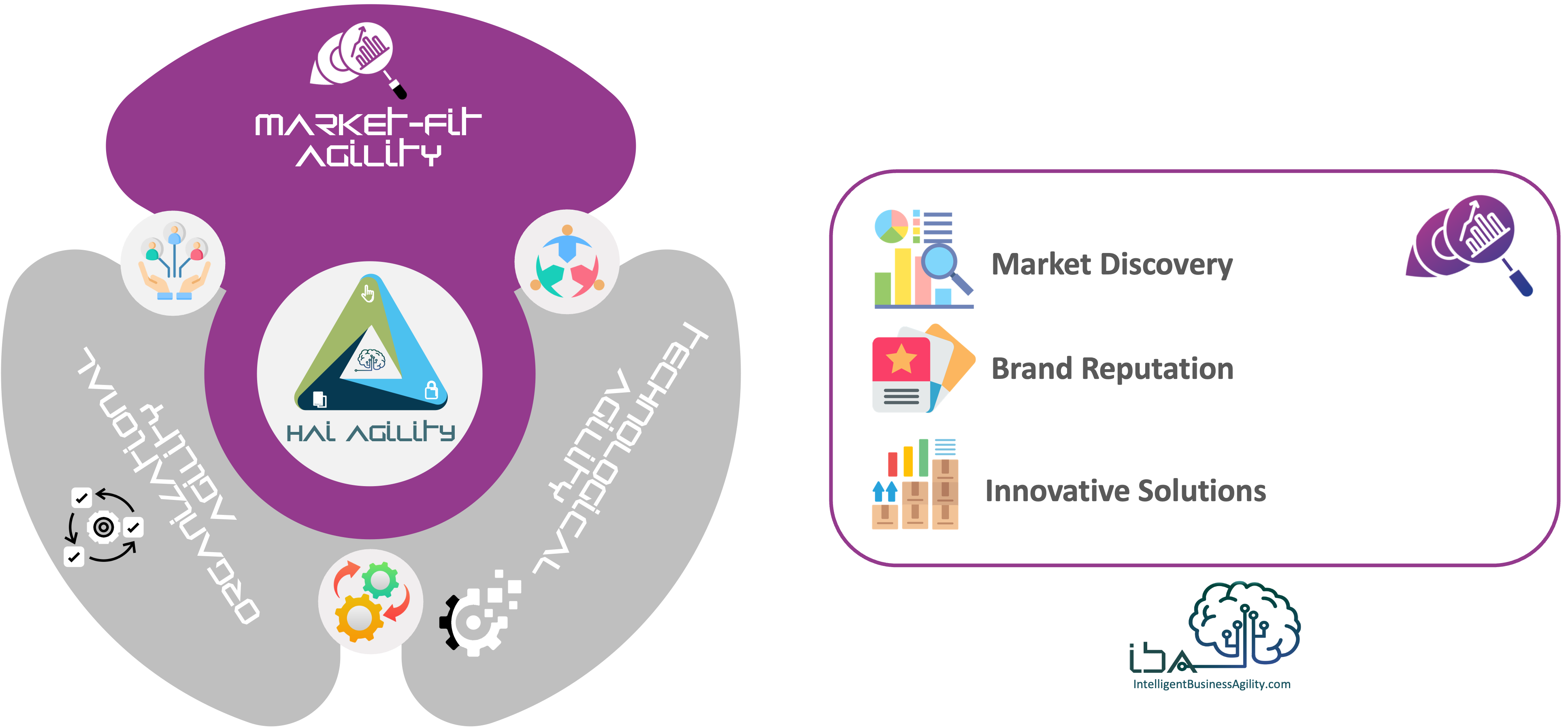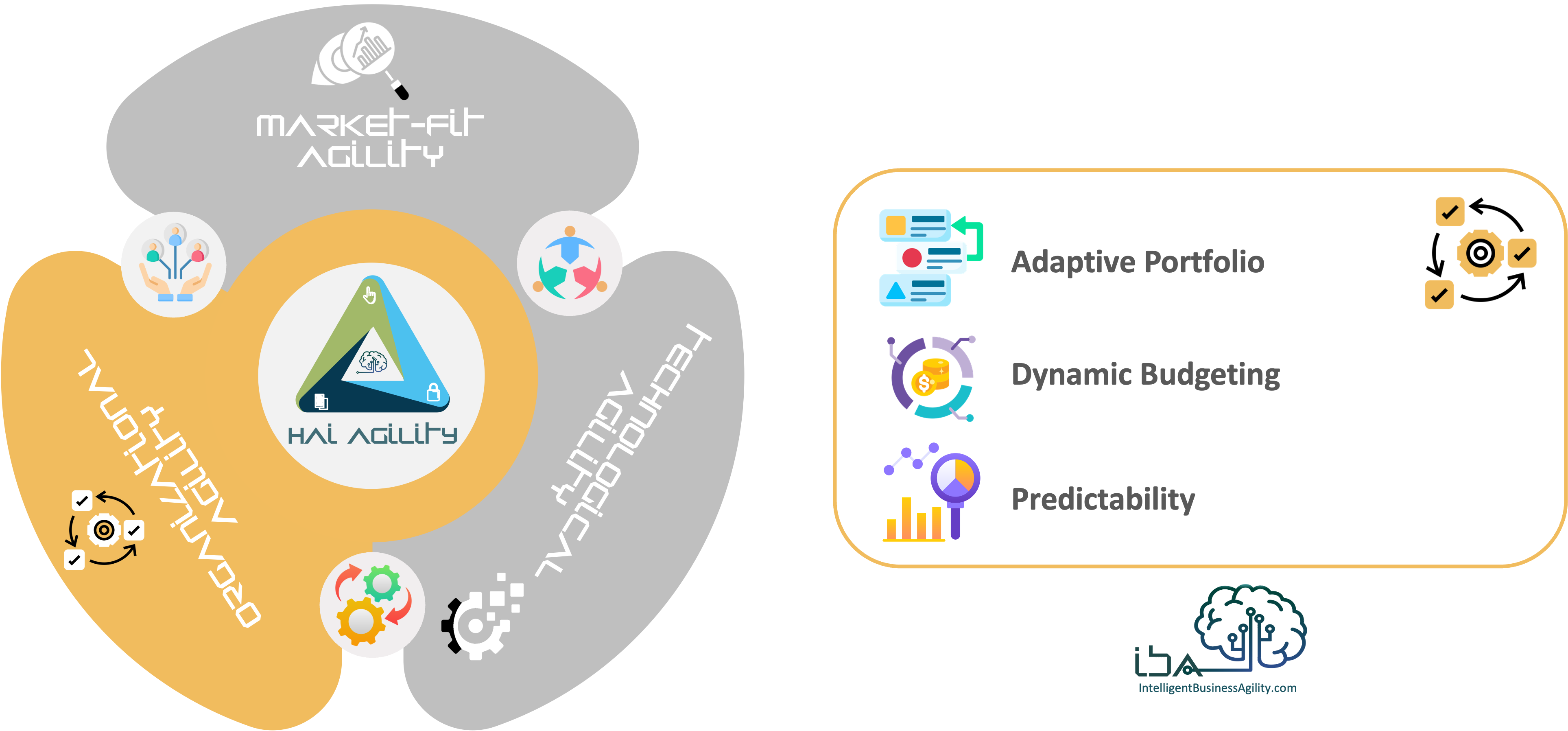![]()
The Intelligence Business Agility is developed on four dimensions, three operational and one digital-social.
H.A.I. Agility
H.A.I. Agility (Human-Artificial Intelligence) is the ability of an organization to implement a connection between People and Intelligent Digital Assistants (IDA), developing a new creative mindset that directs efforts towards common goals capable of enhancing both contributions.
The interaction between people, IDA and corporate leadership represents a new paradigm, in which creativity and proactivity become the engine of change. IDAs stimulate innovation by anticipating needs and automating repetitive tasks, freeing people up to focus on strategic tasks.

With this synergy, you can transform your organization from reactive (or resilient) to proactive, enabling it to stay ahead of the curve and discover new opportunities, rather than waiting for them to appear on the market.
The three pillars of H.A.I. Agility are:
- Smart Leadership: guiding and developing the strategic partnership between People and Artificial Intelligence.
- Emotional Intelligence: ensuring that technology is used to amplify human potential.
- Artificial Intelligence: providing timely analysis and suggestions of merit.
Market-Fit Agility
Market-Fit Agility focuses on the ability to interpret and anticipate market needs, anticipating trends and offering innovative solutions that strengthen one's competitive position thanks to the effectiveness of the products and services offered. Market-Fit Agility.

Market-fit agility is structured around three fundamental pillars:
- Market Discovery, to adequately read the market, as well as to anticipate trends and needs.
- Brand Reputation, investing in the development of one's brand to maintain and strengthen market leadership.
- Innovative Solutions, creating innovative services and products that go beyond the evidence.
Organizational Agility
Organizational Agility is based on the creation of a proactive organizational ecosystem, developed on a complex of stable relationships that allow decisions to be made quickly in order to increase the opportunities for success.
In an extremely dynamic environment, any organization must mobilize quickly to reconfigure not only the strategy, but also the operational structure and existing relationships, with the aim of preserving the value generated by the company and seizing new opportunities. However, the foundation of the success of any agile organization is not only the improvement of performance, but, above all, the continuous creation of value for the target market.

Digital Intelligent Assistants, and Artificial Intelligence in general, transform Organizational Agility, making it a strategic lever to adapt to changes and stimulate creativity within organizations.
This organizational agility is based on three fundamental pillars that allow companies to maintain a clear yet flexible governance that is ready to proactively respond to challenges:
- Adaptive Portfolio, continuously validate initiatives.
- Dynamic Budgeting, allocating resources dynamically.
- Predictability, accurately define operational plans and actions.
Technological Agility
Technological Agility represents an organization's ability to adapt quickly to technological change, integrating new solutions without sacrificing stability and operational quality.
An organization that aims at market leadership must consider technology (not only digital) as a vital asset, not as a cost center with respect to which to limit investments. This is because it is only with the synergistic use of technology that one can react quickly to market and organizational changes.

The pillars characterizing technical agility are:
- Established Technologies, use consolidated state-of-the-art technologies.
- Edge Technologies, study, experiment and integrate new cutting-edge technologies.
- Quality, focusing on quality.
Without human intelligence, there is no utility or purpose for artificial intelligence